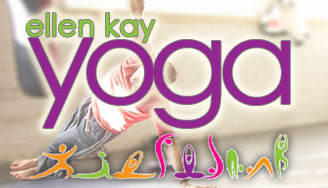calm your mind, energise your body, open your heart, ignite the spirit within
About Us
Yoga is a practical aid & is an ancient art based on a harmonizing system of development for the body, mind, and spirit. The continued practice of yoga will lead you to a sense of peace and well-being, and also a feeling of being at one with your environment.
Yoga is a spiritual path through which one can attain the supreme awareness. This attainment is possible only through the various physical postures and poses. In yogic language, these poses and postures are termed as Asanas. These physical exercises or asanas promote better health and enhance the fitness of you the individual.
There are variations of yoga that will be taught in my class although they all have the same destination. They are Hatha, Iyenga & Ashtanga.
The practice of yoga makes the body strong and flexible, it also improves the functioning of the respiratory, circulatory, digestive, and hormonal systems. Yoga brings about emotional stability and clarity of mind.
From Julia Roberts to a college student it seems like everyone is doing Yoga! Some practice Yoga to help them deal with the day to day stress of a hectic life while for others it’s a means of physical wellbeing. The health benefits of Yoga are numerous, helping some people lose weight and others breathe properly to improve their attention. Yoga has become the tool to help your mind and body stay healthy. But Yoga’s higher purpose is to attain a state of perfect spiritual insight; its true purpose is to assist a Yogi, a practitioner of Yoga, connect to the Divine within! Yoga stems from the Sanskrit word Yuj, meaning to “join” or “get united.” The ultimate goal of Yoga is to unite one’s soul with the Brahman, the Absolute Reality.
The word, “Yoga” first appears in the Hindu scripture, Katha Upanishad, in Chapter 3 verse 11. The verse tells us the meaning and purpose of the Yoga, it says,
Yoga philosophy recognizes that as there are many different types of individuals so there are many different paths to the Brahman, an individual may follow a path based on their temperament. All these paths are categorized in four practices, Gyan Yoga, Karma Yoga, Bhakti Yoga, and Raja Yoga.
Here is how, Swami Vivekanada described each Yoga.
Gyan Yoga (aka Jnana Yoga): First: hearing the truth — that the Atman is the only reality and that everything else is Mâyâ (relativity). Second: reasoning upon this philosophy from all points of view. Third: giving up all further argumentation and realizing the truth. This realization comes from (1) being certain that Brahman is real and everything else is unreal; (2) giving up all desire for enjoyment; (3) controlling the senses and the mind; (4) intense desire to be free. Meditating on this reality always and reminding the soul of its real nature are the only ways in this Yoga.
Karma Yoga: Karma-Yoga is purifying the mind by means of work. The watchword of the Karma-Yogi is “not I, but Thou”, and no amount of self-sacrifice is too much for him. But he does this without any desire to go to heaven, or gain name or fame or any other benefit in this world.
Bhakti Yoga: Bhakti or worship or love in some form or other is the easiest, most pleasant and most natural way of man. The natural state of this universe is attraction; and that is surely followed by an ultimate disunion. Even so, love is the natural impetus of union in the human heart; and though itself a great cause of misery, properly directed towards the proper object, it brings deliverance. The object of Bhakti is God. Love cannot be without a subject and an object. The object of love again must be at first a being who can reciprocate our love. Therefore the God of love must be in some sense a human God. He must be a God of love. Aside from the question whether such a God exists or not, it is a fact that to those who have love in their heart this Absolute appears as a God of love, as personal.
Raja Yoga: As each science has its particular method of investigation, so is this Raja-Yoga the method of religion. This science also is variously applied according to various constitutions. The chief parts are the Prânâyâma, concentration, and meditation. For those who believe in God, a symbolical name, such as Aum or other sacred words received from a Guru, will be very helpful. Aum is the greatest, meaning the Absolute. Meditating on the meaning of these holy names while repeating them is the chief practice of Raja Yoga.
Service Categories
Ashtanga Yoga, Breathwork, Corporate Yoga, Energy Healing, Hatha Yoga, Iyengar Yoga, Kundalini Yoga, Meditation, Pregnancy Yoga, Reiki, Vinyasa Yoga, Yoga
|
|
 |